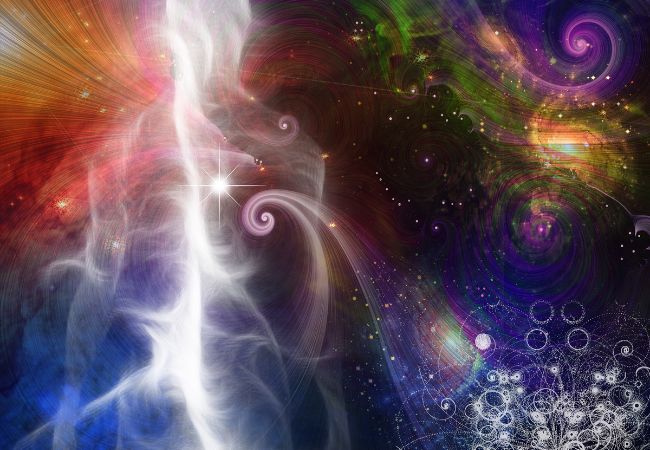Picking the perfect paint brush is crucial and must be done with care, even for a beginner. Different techniques and substances will require different brushes during your painting project and thankfully, a large variety of brushes are available which will suit everyone’s needs. Once you understand the features of the brush on hand, it would make it easier for you to do tasks such as wet on wet painting and canvas painting. So whether you are trying to fill in a canvas with watercolor or painting a wall with oil paint, having the right brush optimizes accuracy and it makes the task more manageable. This post will discuss in detail the characteristics and appropriate use cases of different paint brushes so that the next time you are starting off with a project, you know the right tools to have at hand.
Flat brushes
Traits
Among some other kinds of paint brushes, flat brushes are easily differentiated due to their rectangular shapes and the bristles attached to them. With flat brushes, you are able to easily make broad strokesand with precision and depth as well. The edges are straight and the profile is wide which means it’s easier to paint large sections with one brush as the need for color mixing is reduced and the edges only help create linear designs. According to studies released in the Journal of Arts and Design, brush operators highlighted: “hetch gets uncomfortable when standing on thin edges and defines a definite in the estimation of flat brushes.
Ideal Uses
While flat brushes are best suited for a general approach, they may fit different styles as well.
Painting large areas: The wide bristle is excellent for undertaking painting tasks like base coats and creating backgrounds as it is designed to cover a lot of area at once.
Making strokes: The bristles ensure that the strokes we make are very confident, meaning the brush is best at outlining and defining edges.
Creating sharp edges: The edges also allow the user to generate sharp borders which can be great for constructing geometric objects.
When it comes to oil and even acrylic painting, flat brushes are an essential tool to have, especially for coverage and precision based tasks.
Round brushes
Characteristics
Round brushes are generally narrow and come in different sizes between small to medium with a sharp tip. The arrangement and size of the bristles allow for many techniques when painting which makes it a versatile tool as well. Detailed work gets nuanced with a narrow tip while the general shape of the brush allows for bulk amounts of paint to get used for wider strokes. Research from College of Fine Arts suggest that round brushes should be ideal for achieving detailed work due to their fine point capable of holding good amounts of paint.
Ideal Uses Round brushes can be particularly helpful in the following aspects: 1. Detailed painting – The finely tipped brush enables an artist to achieve a remarkably high level of precision while working on any detailed painting. 2. Creating fine lines – It is useful for delicate line work, adding intricate details to complicated pieces of art. 3. Controlled strokes: Depending on their physical size, an artist can produce numerous types of stroke widths and intensity, which contributes greatly to various styles/techniques. Artists applying watercolor and acrylic painting often prefer using round brushes as they are more suited for fine detail work which needs to be applied in a controlled manner. Angular Brushes A wash i.e. thin layer of paint and water is used on canvas in a sweeping motion which results in highly visual paintings with a deeper meaning to the content. Characteristics An angular brush is the most widely used because of its slight tilting of the bristles which allows for precise application and for the opportunity to paint on angles. This particular design makes it easy to paint both sharp lines and textured impressions. The angle of the bristles allows a shoulder or finger painting technique to be used which mixes the inner and outwards hand motions. As stated in research published in the Journal of Painting and Sculpture, angular brushes are widely held in high esteem particularly for their ability to produce textures and clean cut lines. Ideal Uses Angular brushes can best be used in painting as a stylistic technique whenever the following are required: 1. Painting sharp edges: The angle of the bristles helps define clean cut precise edges in your painting.
Creating textures: Using the edge of the brush, the painter can put on paints in various ways, thus creating various textures and patterns.
Achieving controlled strokes: The precise nature of the inflected angle of the bristles enables controlled paint application.
Fan brushes
Characteristics
Fan brushes are designed with bristles that diverge from the center in a radial fashion which gives the brush a fan shape. This feature enhances soft blending and the mixing of varying textures. The arrangement of the bristles makes it easy for paint to be applied with ease, so that different effects can be incorporated in your artwork. An article published by the Art Institute of Chicago indicates that fan brushes are so shaped that they allow for the creation of textures control that resembles nature.
Ideal Uses
Fan brushes are useful tools mostly for the extracts suggested below:
Creating interesting textures: The brush has a fan shape which will enable a stipple effect to be created and textured strokes to be made which is useful in representing such natural phenomena as foliage and clouds.
Blending Effects: The spread of the bristles ensures that smooth transitions from one color to another are possible thereby enhancing blending in watercolor and acrylic painting.
Painting natural elements: They do well in effectively imitating natural textures such as leaves and clouds which look good in your landscape paintings.
In acrylic and watercolor paints, fan brushes are quite efficient in creating textured effects and in color mixing.
Filbert Brushes
Specifications
Filbert brushes are bristle brushes which have an oval tapered head essence that is a merger of round and flat paint brush styles. This style accommodates various techniques such as detail and even blending. Additionally, due to the oval shape, it is possible to do more detailing work and also broad strokes this is why It is one of the most widely used brushes by most artists Reserch by the School of Fine Arts emphasis that smooth ending and soft edged objectives this tool is very appealing when achieved.
Best Applications
Filbert brushes suit such applications, for example:
Merging different hues: The resultant shapes such as flat and round enhanced cross–over between hues achieving smooth colour transition.
Softening painting edge: The implementation is less aggressive because of the oval tip making them ideal in developing soft painting edges and more subtle changes.
Smoothly changing transitional colours: They can be used with both oil paints and watercolours making it possible to transition from one hue to different shades effectively.
Filbert brushes are very important tools when working with watercolors or oil paints especially in getting the smooth and soft transition blends.
Detail Brushes
Detailing paint brushes are described with their fine bristles which enable a user to achieve precision painting. Detail Work and line detailing works quite well with these paint brushes. A research from Fine Arts University throws light on creation of detail work in an art piece which is essential for detailing and designing especially when the piece of work is complicated.
Detail Brushes- Ideal Uses
Detail brushes can be best used to achieve:
Fine lines: These are critical as the construction of fine and proper lines is possible because of the bristles that are carefully spaced.
Small areas: Certain details which require tiny parts of the artwork to be painted can be achieved.
watercolor and acrylic painting where intricate detailing is essential for precision painting.A detail brush can be used when fine lines and details are required in the watercolor.
Water based or acrylic paints are best complemented with detail paint brushes, as they allow the user to paint small details accurately.
### Mop Brushes
### Characteristics
Due to their large round shape and their soft bristles, mop brushes are known to have a high absorbtion capability. Such an engineering enables mop brushes to hold significant amounts of water or paint allowing them to be ideal for broad strokes. As the bristles are soft, blending and gentle application becomes possible, water paintings in particular are able to gain smooth textures as a result of this. A research paper published by the University of art and design states and concludes that mop brushes are ideal at blending soft textures and making background paints look smooth.
### Ideal Uses
Some of the ideal uses for a mop brush include:
What Comes First: The large round shape allows for users to apply washes and blended even coats, something vital when it comes to water color techniques.
Going Big: The shape also allows for covering larger areas with ease providing high consistency with paint application.
Blending Together: Their highly absorbant nature allows for easy blending and transitioning between soft colors and shades.
As mentioned earlier mop brushes interconnected with water colors are highly effective in blending smooth colors and tones without applying an excessive amount of force or looking unrefined.
Liner Brushes
Characteristics
The design of liner brushes features extended incredibly slender bristles for expert detail and precision to be achieved. The extended bristles are designed to accumulate paint for more delicate work. The Fine Bristles of the Liner Brushes are very essential in paintings and illustrations as they provide intricate detailing and accenting to the design. Research from the Art & Design Academy shows that when needing to create fine lines and detailed pieces liner brushes are essential.
Ideal Uses
When using liner brushes it is surprisingly easy to apply them for the following:
Fine lines: Having thin bristles means that achieving thin lines in detailed art work becomes easier.
Delicate details: These brushes accumulate paint in a way that allows precisely adding representation meaning accenting and detail on intricate compositions is a breeze.
Controlled strokes: Having the ability to be so precise when painting means it becomes possible to paint with high results.
When needing to paint with precision or detail in art and illustration Liner Brushes are a must have.
### Fan Detail Brushes
#### Characteristic Features:
Finer and special effects come in through a combination of a fan shape and fine bristles, which are a characteristic feature of the fan detail brush. A textural effect is achieved through the fan shape and adding precision to detailing work is when the fine bristles come in handy. According to a publication from the Journal of artistic Techniques, the tools serve creative tasks more efficiently as a combination of a fan shape and fine bristle into these brushes is integrated.
#### Ideal Uses:
The following are some ideal uses of the fan detail brushes:
– **Creating textures:** Different textural effects can be applied to the fan shape which adds depth and interest to the work of art.
– **Detailed effects:** The brushes can create finer pieces which are suitable for intricate patterns and effects, thus making it great for detailed work.
– **A mixture of painting techniques:** The brushes are great for watercolor and acrylic painting techniques too, which helps in achieving a variety of effects and painting techniques.
Across both acrylic and watercolor paints, the fan detail brushes are loved for their flexibility and creation of cool textural effects.
Spalter Brushes
Characteristics
Brushes from Spalter are specially developed for use on a large scale due to their small size and wide flat shape. Its wide flat shape enables them to cover more percentage of areas at once, so it is possible to apply large amounts of paint onto fabrics at once. Their robust bristles enable the application of heavy paint layers and the creation of textured effects. As indicated by the research in the Institute of Fine Arts, spalter brushes are valuable for painters working with medium and large paintings as they allow covering large surfaces as well as making textural applications.
Ideal Uses
Spalter brushes are ideally suited for the following applications –
Large area coverage – The large and flat shape of the spalter brush allows the user to paint large areas with a single stroke, making it great for large paintings.
Broad Brush strokes – Spalter brushes allow large sweeping strokes making background and large elements easy to paint.
Textured painting – They can be used to paint textures due to their thick bristles.
Such spalter brushes for painting are extremely valuable in oil and acrylic paintings as they allow for texturing and handle a large amount of paint easily.
Varnish Brushes
Characteristics
These Varnish Brushes possess stiff bristles built solely for varnishes or protective layers. The brushes’ stiff bristles help the end user achieve an even tend of the varnish or sealant and aid them in getting a neat and consistent result. According to a study carried out by the Art Restoration Institute, these varnish brushes are pivotal in getting a uniform coat on any work and saving the piece from any sort of environment issues.
Ideal Uses
Varnishers are a crucial piece of equipment when:
Coating enhancements: Coating enhancements are a vital part of sealers as they cover and protect the artwork.
Smoothing the tend: Because of the bristles’ firmness, the varnish can be evenly applied to the painting, improving how it seems to the eye.
When everything is fully painted, varnishing brushes become a necessity in order to protect the painting and give a finished look.
Conclusion
Choosing the right paintbrush from the variety offered can make or break your painting project. But knowing the exact function of each of them and what they do makes it easy to pick those that fit your paint for a better expression and great results. Each kind of brush can serve a variety of tasks, from broad washes to fine details. So using the right type of brush can make all the difference to your tasks.
FAQs
Which Paint Brush Do You Recommend For A Beginner?
Round brushes should be used as first options as they are easy to hold and can use many techniques as well as many different styles of painting.
What Is The Correct Way To Take Care Of Your Brushes So That They Last Longer ?
For cleansing, it is the correct use of brush cleaners and rinsing brushes after use. Repairs, such as redefining the bristles or not soaking brushes in water for long periods, will make them last longer.
Is It Okay To Use The Same Brush If I Want To Use Different Paints?
You should use different brushes for each paint type for the best results as each paint type requires different bristle types to work best to prevent contamination.
How Do You Decide Which Paint Brush To Use For Each Project?
Take into account the type of paint including the method of application, what effect is anticipated. Once you grasp the distinct features of every brush, it will be easy to pick the most appropriate one for the kind of work you want to do.
References
- “The Art of Brushwork,” Journal of Arts and Design
- “Painting Techniques and Tools,” College of Fine Arts
- “Brush Care and Maintenance,” Art Restoration Institute
More Post





